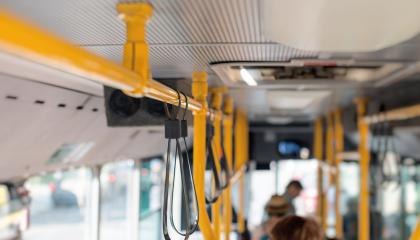When designing tactile warning systems, one often overlooked yet critical aspect is color contrast. Color contrast plays a significant role in ensuring the effectiveness and accessibility of these systems for individuals with visual impairments. By strategically incorporating contrasting colors, we can greatly enhance the usability and safety of tactile warning systems.
Objects do not possess color of their own. Our eyes perceive color as different wavelengths of light that bounce off things, and our brains process that information to help us interpret the world we see in vibrant color.
The visible spectrum lands between ultraviolet light and red light for humans, but scientists believe that humans can recognize up to 10 million colors.
For the urban landscape, sidewalks have become a type of no man’s land for city commuters — not only for pedestrians but also for cyclists. Since vehicles rule the road, pedestrians and cyclists are at-risk anytime they walk or ride in the road. To remain safe, city cyclists and pedestrians often turn to the sidewalk.
While many cities want their residents and commuters to move away from using cars and encourage bicycling, pedestrians in some cases see this shift as dangerous.
The Americans with Disabilities Act provides a guideline for how companies and public spaces can be made accessible for individuals with disabilities. While most of the standards focus on building design and public area accessibility, the ADA offers information on the best practices for ADA compliant flooring. When planning your flooring project, consider the specifications for floor and ground, including surface characteristics and carpeting.
Private accessible transportation refers to transportation that caters to individuals with impairments. While not necessarily in the public sector, private transportation includes volunteer driver programs, para-transit services, and ride-shares which must comply with the Americans with Disabilities Act (ADA).
Public transportation offers independence to individuals with low vision, providing opportunities for community involvement, job commute, and so much more. While public transportation offers independence, it can be difficult for individuals with low vision to navigate the transportation system. Any public transportation can be complicated to use--from finding the right route, boarding the correct bus, and exiting at the right stop.
While the Americans with Disabilities Act (ADA) outlines a set of standards for accommodating the needs of individuals with disabilities, ADA compliance is something that benefits everyone. When our businesses, neighborhoods, and local government agencies work to be considerate of individuals with differing needs, our inclusive community provides the space to recognize the unique gifts and perspectives that these individuals can offer.
The Americans with Disabilities Act (ADA) outlines how to provide accessible public transportation to individuals with disabilities and mobility issues. While ADA offers the guidelines and rules for transportation, it’s the U.S. Department of Transportation that regulates public transportation.
A few weeks ago, we talked about the importance of ADA compliance for a temporary event. Meeting U.S. government standards for a public area can be challenging in general, but a temporary event that is open to the public provides its own hurdles to overcome. ADA compliance at a temporary event can be difficult, but compliance is worth the work to create a more accessible world.
For sidewalks and now websites, color ADA compliance ensures that people with low vision are able to see a clear contrast for viewing information. While the government requires a certain standard for public areas and websites, color ADA compliance is important for more reasons than just government conformity.
Connect with us
We pride ourselves on our customer service, and we'd love to hear from you! Sign up for our newsletter to keep up with industry updates and trends, as well as any new product releases.












